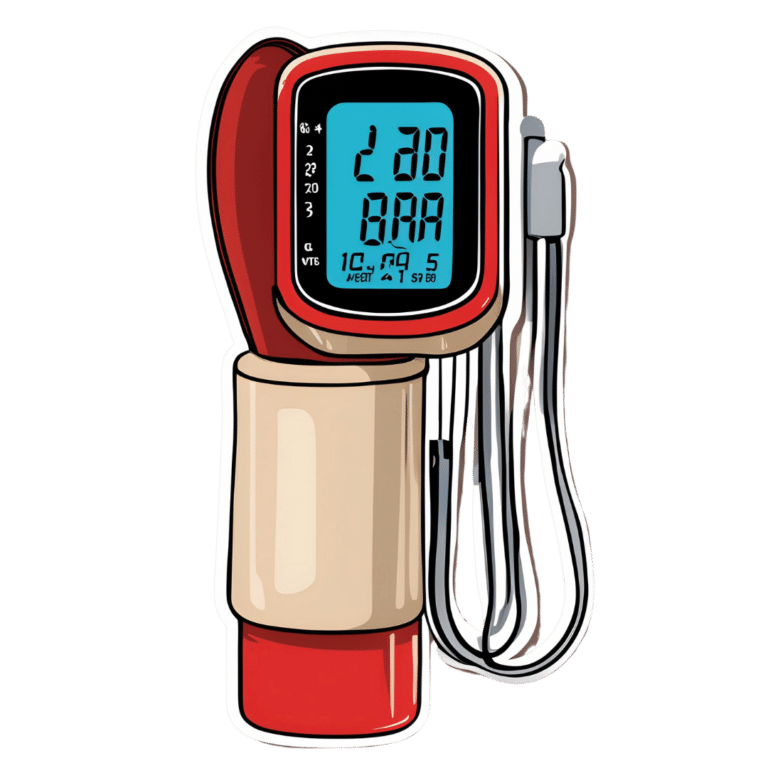
How Healthy People Regulate Their Emotions
10almonds is reader-supported. We may, at no cost to you, receive a portion of sales if you purchase a product through a link in this article.
Some people seem quite unflappable, while others are consistently on the edge of a breakdown or outburst. So, how does a person regulate emotions, without suppressing them?
Eight things mentally healthy people do
Doing these things is hardest when one is actually in a disrupted emotional state, so they are all good things to get in the habit of doing at all times:
- Recognize and label emotions: identify specific emotions like anxiety, excitement, frustration, and so forth. You can track them for better emotional management, but it suffices even to recognize in the moment such things as “ok, I’m feeling anxious” etc.
- Embrace self-awareness: acknowledge emotions without judgment, using mindfulness and meditation to enhance emotional awareness and reduce reactivity—view your emotions neutrally, with a detached curiosity.
- Reframe negative thoughts: use cognitive reappraisal to change your perspective on situations, viewing setbacks as opportunities for growth.
- Express emotions constructively: use outlets like writing, or talking to someone to process emotions, preventing emotional build-up. Creating expressive art can also help many.
- Seek social support: cultivate strong relationships that provide emotional support and perspective, helping to manage stress and emotions.
- Maintain physical health: exercise, sleep, and a balanced diet support emotional resilience by improving overall well-being and brain function. It’s harder to be in the best mental health if your body is collapsing from exhaustion.
- Use stress management techniques: practice deep breathing, meditation, or other (non-chemical) relaxation methods to reduce stress and calm the mind and body.
- Seek professional help when needed: when emotions become overwhelming, consider therapy to develop personalized coping mechanisms and emotional regulation strategies.
For more details on all of these, enjoy:
Click Here If The Embedded Video Doesn’t Load Automatically!
Want to learn more?
You might also like to read:
- How Are You, Really? (Alexithymia & Emotional Regulation)
- How To Manage Chronic Stress
- How To Set Anxiety Aside
- A Selection Of CBT & DBT Tools For Emotional Regulation
Take care!
Don’t Forget…
Did you arrive here from our newsletter? Don’t forget to return to the email to continue learning!
Recommended
Learn to Age Gracefully
Join the 98k+ American women taking control of their health & aging with our 100% free (and fun!) daily emails:
-
The Gut Bacteria That Improve Your General Decision-Making In Life
10almonds is reader-supported. We may, at no cost to you, receive a portion of sales if you purchase a product through a link in this article.
As one YouTube commenter said, “Trust your gut, but make sure you have a trustworthy gut first”!
Dr. Tracey Marks, psychiatrist, explains how:
Gut feelings and more
As you probably know, the gut and brain communicate via the vagus nerve, making gut bacteria highly influential.
How influential? Here are some key points from the video:
- Healthier gut bacteria are linked to more cautious risk-taking and future-oriented decisions.
- Gut bacteria influence serotonin (95% produced in the gut), dopamine, and neurotransmitters essential for decision-making.
- People with good gut health prioritize fairness in decision-making.
- The gut influences decision-making via neurotransmitter production, vagus nerve signaling, and inflammation control.
Gut bacteria produce metabolites (beyond the neurotransmitters mentioned above!) that affect nerve circuits for emotion and executive function. These postbiotics (postbiotics = byproducts of gut bacteria fermenting prebiotics) play a crucial role in brain health. Examples of things they make include short-chain fatty acids (butyrate), enzymes, peptides, and vitamins, which between them strengthen gut lining, reduce inflammation, regulate serotonin, and support immune function. Scientists are even exploring postbiotics for treating metabolic and inflammatory diseases.
Timeline of brain-gut axis health improvements
- Days 4–14: gut bacterial composition starts changing (you probably won’t notice anything brainwise, but you may get gas; this is normal and temporary)
- Weeks 2–6: mood and mental clarity improve (you’ll start feeling it here, most likely first in an abstract “life seems more beautiful” sort of way, plus less brain fog)
- Months 2–3: long-term neural adaptations form (this is where the decision-making improvements come in, so you’ll need some patience about this, but the mood boost you’ve now had since weeks 2–6 should make the next bit even easier).
Dr. Marks’ suggestions, to make the most of this:
- Diversify diet: aim for 30* different plant-based foods per week!
- Try fermented foods: start with small amounts of kimchi, kefir, etc.
- Increase fiber intake: add chia seeds or flaxseeds to meals!
- Limit artificial sweeteners: many of them disrupt gut bacteria.
- Maintain regular meal times: supports bacterial circadian rhythms.
- Don’t rely solely on supplements; whole foods are more effective!
*this is not a random number out of a hat; there is science behind the number! Here’s the science.
For more on all of this, enjoy:
Click Here If The Embedded Video Doesn’t Load Automatically!
Want to learn more?
You might also like:
Take care!
Share This Post
-
Do You Need to Wear Sunscreen Indoors? An Analysis
10almonds is reader-supported. We may, at no cost to you, receive a portion of sales if you purchase a product through a link in this article.
Dr. Michelle Wong—chemist, science educator, and cosmetician—explains the science:
Factors to take into account
UVA and UVB aren’t entirely interchangeable, so it’s important to know what you’re up against.
Sunscreen is rated by SPF, which indicates UVB protection—guarding against burning, skin cancer, and premature aging. Broad spectrum or UVA ratings measure protection against UVA rays, which cause tanning, contribute to melanoma, and can lead to skin aging and hyperpigmentation. However, most UV studies are based on white skin, which may not apply universally.
The need for sunscreen indoors depends on how much UV exposure you receive there:
- Direct exposure occurs when sunlight shines directly on you, such as when sitting by a window.
- Diffuse exposure happens when UV rays are scattered by air molecules or reflected off surfaces, which can still occur in shaded areas.
Indoors, walls and barriers do reduce UV exposure significantly. However, factors like window size, distance from windows, and the type of glass (which blocks UVB but not all UVA) play important roles in determining exposure.
The UV index (your phone’s weather app will probably have this) indicates the level of sunburn-causing UV in a specific area at a particular time. In Sydney, for example (where Dr. Wong is), the UV index can vary from 12 in summer to 2 in winter. Although UVA levels fluctuate less dramatically than UVB, they still peak during midday and in summer. Health guidelines in countries like Australia recommend wearing sunscreen when the UV index is 3 or above, but not necessarily every day.
Personal factors also influence the need for sunscreen indoors. People with darker skin, who have more melanin, may need less protection from incidental UV exposure but might still require UVA protection to prevent pigmentation. Those using skincare products that increase UV sensitivity, like alpha hydroxy acids, or those with specific medical conditions, such as photosensitivity or a family history of skin cancer, may also get particular benefit from wearing sunscreen indoors.
As to the downsides? There are some drawbacks to wearing sunscreen indoors, including cost, the effort required for application, and the risk of clogged pores. Though health concerns related to sunscreen are generally minor, they may tip the balance against wearing it if UV exposure is minimal.
For more on all of this plus visual teaching aids, enjoy:
Click Here If The Embedded Video Doesn’t Load Automatically!
Want to learn more?
You might also like:
Do We Need Sunscreen In Winter, Really? ← we tackle the science behind the answer to this similar* question
*But different, because now we need to take into account such things as axial tilt, the sun’s trajectory through the atmosphere (and thus how much gets reflected, refracted, diffused, etc—or not, as the case may be).
Take care!
Share This Post
-
Why Some Friendships Last And Others Don’t
10almonds is reader-supported. We may, at no cost to you, receive a portion of sales if you purchase a product through a link in this article.
Friendships matter a lot, playing a significant role in our wellbeing, physical as well as mental. They bring additional meaning to our lives, help us cope with setbacks, and hopefully will be at our side through the highs and lows of life. And yet, for something that’s in principle good for everyone involved, there can be problems:
Friend to the end?
Firstly, some people find it harder to make (and then further deepen) friendships with others, which can be for a whole host of reasons.
Approaching new people can feel intimidating, but it’s a common struggle. Research shows that people often underestimate how much others enjoy their company, a phenomenon known as the “liking gap.” By reminding ourselves that others are likely to appreciate our presence and expecting to be well-received (the “acceptance prophecy”), we can approach social interactions with greater confidence.
As relationships grow, they often deepen through companionship and closeness:
- Companionship arises from shared hobbies, interests, or values, and it builds rapport.
- Closeness involves sharing thoughts, feelings, and experiences, which can build intimacy together.
An important key to these is consistency, which—whether through regular chats, honoring plans, or showing support—helps strengthen bonds, even in long-distance friendships (something often considered a barrier to closeness).
Even the strongest friendships can face challenges, of course. Conflicts may arise from a lack of support during difficult moments, or worse, betrayal. Or it could all be a misunderstanding. These situations are best addressed through honest, non-judgmental conversations. Avoiding defensiveness or accusations, and instead focusing on sharing feelings and understanding the other person’s perspective, can turn these tough discussions into opportunities for growth and stronger connections.
For more on all of this, enjoy:
Click Here If The Embedded Video Doesn’t Load Automatically!
Want to learn more?
You might also like to read:
How To Beat Loneliness & Isolation
Take care!
Share This Post
Related Posts
-
Does Your Butt…Wink?
10almonds is reader-supported. We may, at no cost to you, receive a portion of sales if you purchase a product through a link in this article.
What is a Butt Wink?
A “butt wink” is a common issue that occurs during squatting exercises.
Now, we’ve talked about the benefits of squatting countless times (see here or here for just a few examples). As with all exercises, using the correct technique is imperative, helping to both reduce injury and maximize gain.
Given butt winks are a common issue when squatting, we thought it natural to devote an article to it.
So, a butt wink happens when, at the bottom of your squat position, your pelvis tucks rotates backward (otherwise known as a “posterior pelvic tilt”) and the lower back rounds. This motion looks like a slight ‘wink’, hence the name.
How to Avoid Butt Winking
When the pelvis tucks under and the spine rounds, it can put undue pressure on the lumbar discs. This is especially risky when squatting with weights, as it can exacerbate the stress on the spine.
To avoid a butt wink, it’s important to maintain a neutral spine throughout the squat and to work on flexibility and strength in the hips, glutes, and hamstrings. Adjusting the stance width or foot angle during squats can also help in maintaining proper form.
A visual representation would likely work better than our attempt at describing what to do, so without further ado, here’s today’s video:
How was the video? If you’ve discovered any great videos yourself that you’d like to share with fellow 10almonds readers, then please do email them to us!
Don’t Forget…
Did you arrive here from our newsletter? Don’t forget to return to the email to continue learning!
Learn to Age Gracefully
Join the 98k+ American women taking control of their health & aging with our 100% free (and fun!) daily emails:
-
What Your Eyes Say About Your Health (If You Have A Mirror, You Can Do This Now!)
10almonds is reader-supported. We may, at no cost to you, receive a portion of sales if you purchase a product through a link in this article.
In an age when doctors are increasingly pressed to get you out of their office quickly and not take the time to do thorough tests, having a good basic knowledge of signs and symptoms of disease has become more important than ever for all of us:
The eyes have it:
Dr. Siobhan Deshauer is back, this time working with Dr. Maria Howard, a Canadian optometrist, who advised behind-the-scenes to ensure the best information about these signs and symptoms and what they tell us:
- Color blindness test: Ishihara color test identifies color blindness; in the version in the video, seeing “74” is normal, “12” indicates red-green color blindness, and no numbers suggest complete color blindness due to genetics or retinal/optic nerve issues.
- Yellow sclera (scleral icterus): yellow sclera indicates high bilirubin from excessive red blood cell breakdown, liver damage, bile duct blockage, or Gilbert syndrome.
- Blue sclera: indicates thin collagen in the sclera, which can be linked to osteogenesis imperfecta, Ehlers-Danlos syndrome, and Marfan syndrome.
- Pink eye: caused by infections, autoimmune diseases, or trauma; persistent symptoms or associated pain/vision changes need medical evaluation.
- Physiologic diplopia (double vision): normal test where fingers appear doubled when focusing on different planes; absence may indicate amblyopia.
- Pinhole test (visual acuity): looking through a small pinhole can determine if glasses are needed for clearer vision.
- Nearsighted vs farsighted: nearsightedness risks retinal tears and night vision issues, while farsightedness increases the risk of glaucoma.
- Eye color and health: brown eyes lower cancer risk but higher cataract risk; light eyes higher cancer risk but lower cataract risk; sudden changes may indicate a condition.
- Kayser-Fleischer rings: golden-brown rings around the iris suggest copper buildup from Wilson disease, treatable with chelation therapy.
- Corneal arcus: gray/white ring around the iris indicates cholesterol buildup, normal with aging but concerning in younger individuals, signaling hypercholesterolemia or artery narrowing.
- Limbal rings: dark rings around the iris are generally aesthetic and not health-related.
- Red desaturation test: a difference in red color perception between eyes may indicate optic nerve or retinal issues.
- Eye twitching: often linked to stress, sleep deprivation, or caffeine; persistent twitching or muscle involvement requires medical attention.
- Pupillary reflex: pupil constriction in light; abnormal responses suggest trauma, overdose, or poisoning.
- Cataracts: lens cloudiness due to age, UV exposure, smoking, diabetes, or prednisone; also occurs sometimes in youth due to conditions like diabetes.
- Yellow spots (pinguecula and pterygium): sun damage, wind, and dust exposure cause yellow spots; protect with sunglasses to prevent progression impacting vision.
- Dark spots in the eye: includes freckles, moles (nevi), and melanoma; changes require medical evaluation.
- Hypnotic induction profile: eye roll test assesses susceptibility to hypnosis.
- Floaters: normal clumps in the eye; sudden increases, flashes, or curtain-like effects may signal retinal detachment.
- Retinal detachment: caused by aging-related vitreous shrinkage; treated with lasers, gas bubbles, or retinal buckles.
- Macular degeneration (Amsler grid test): wavy, fuzzy lines or missing vision spots may indicate this condition.
- Giant cell arteritis: no, that’s not a typo: rather it is about blood vessel inflammation that can cause blindness; treated with prednisone, symptoms include headaches and vision changes.
- Near point of convergence: focus test to detect convergence issues common with excessive screen time.
- Blepharitis: eyelid inflammation causing itchiness, burning, or flaky skin; treated with hygiene, antibiotics, or tea tree oil.
- Proptosis (Graves’ disease): bulging eyes due to hyperthyroidism; treatable with medications, radiation, or surgery.
- Ptosis (droopy eyelids): indicates myasthenia gravis, temporarily improved with the ice pack test.
- Night vision issues: caused by retinal problems or high myopia, not typically vitamin A deficiency in developed countries.
- Dry eyes: caused by screen time, smoking, medications, or autoimmune diseases; managed with lubricating drops, reduced screen time, and adjustments.
- Watery eyes: caused by irritation or blocked tear ducts; treated with lubricating drops or surgery.
- Retinoblastoma: rare childhood cancer detectable through flash photography showing one white pupil; early detection enables treatment.
For more on all of these plus visual demonstrations, enjoy:
Click Here If The Embedded Video Doesn’t Load Automatically!
Want to learn more?
You might also like:
What Your Hands Can Tell You About Your Health
Take care!
Don’t Forget…
Did you arrive here from our newsletter? Don’t forget to return to the email to continue learning!
Learn to Age Gracefully
Join the 98k+ American women taking control of their health & aging with our 100% free (and fun!) daily emails:
-
Brain Maker – by Dr. David Perlmutter
10almonds is reader-supported. We may, at no cost to you, receive a portion of sales if you purchase a product through a link in this article.
Regular 10almonds readers probably know about the gut-brain connection already, so what’s new here?
Dr. David Perlmutter takes us on a tour of gut and brain health, specifically, the neuroprotective effect of healthy gut microbiota.
This seems unlikely! After all, vagus nerve or no, the gut microbiota are confined to the gut, and the brain is kept behind the blood-brain barrier. So how does one thing protect the other?
Dr. Perlmutter presents the relevant science, and the honest answer is, we’re not 100% sure how this happens! We do know part of it: that bad gut microbiota can result in a “leaky gut”, and that may in turn lead to such a thing as a “leaky brain”, where the blood-brain barrier has been compromised and some bad things can get in with the blood.
When it comes to gut-brain health…
Not only is the correlation very strong, but also, in tests where someone’s gut microbiota underwent a radical change, e.g. due to…
- antibiotics (bad)
- fasting (good)
- or a change in diet (either way)
…their brain health changed accordingly—something we can’t easily check outside of a lab, but was pretty clear in those tests.
We’re also treated to an exposé on the links between gut health, brain health, inflammation, and dementia… Which links are extensive.
In closing, we’ll mention that throughout this book we’re also given many tips and advices to improve our gut/brain health, reverse damage done already, and set ourselves up well for the future.
Click here to check out “Brain Maker” on Amazon and take care of this important part of your health!
Don’t Forget…
Did you arrive here from our newsletter? Don’t forget to return to the email to continue learning!
Learn to Age Gracefully
Join the 98k+ American women taking control of their health & aging with our 100% free (and fun!) daily emails:







